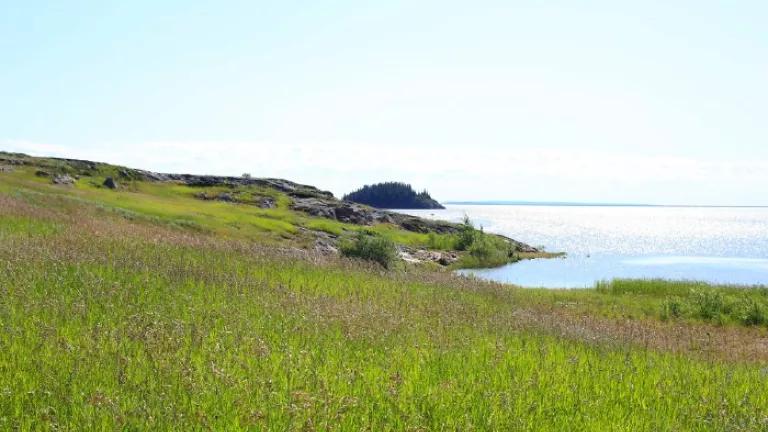
We arrived in Calgary, Alberta today on the first leg of a trip to see firsthand the strip mining and drilling for oil in the tar sands region of Canada’s Boreal forest. NRDC’s Executive Director, Peter Lehner, and others in leadership positions with the organization will be touring the region over the next three days.
Our trip to the tar sands falls at a critical point in time. The Gulf oil disaster has focused attention on our costly dependence on fossil fuels, especially those that are harder to reach and more damaging to extract such as oil extraction in the tar sands and coal mining through mountain-top removal, as well as oil from offshore drilling. Ironically, as our group visits the tar sands and Ft. Chipewyan, the Alberta Environment Minister is participating in a Boston forum to try to convince Americans that we need more dirty fuel sources for our cars and trucks. Read my colleague Luke Tonachel’s blog about this forum and its oil industry sponsors.
Meanwhile, back in Alberta, on Monday morning, we’ll travel to Ft. McMurray into the heart of the tar sands extraction operations. Tuesday, we’ll head up north to the community of Ft. Chipewyan and the the Peace-Athabasca Delta, an NRDC BioGem. But even in Ft. Chipewyan and in the beautiful wilderness of the Delta, the tar sands will not be far from our minds. We will hear from community members about their fears for their health as they suffer from elevated rates of cancers living downstream from the tar sands operations. And, we will hear how the Delta, one of the world’s most important migratory bird nesting areas, is under threat from global warming, a dam on the Peace River and more recently from water withdrawals and pollution caused by tar sands strip-mining on the Athabasca River.
Last year, when I made a similar trip, we went fishing and caught our lunch for the next day. This year, our hosts have said that they no longer will eat the fish from the Delta. As with the Gulf, a traditional way of life in northern Alberta is being destroyed. The Alberta tar sands oil excavations are causing the equivalent of a slow motion oil spill where if the anticipated expansion occurs, the cumulative impacts of strip mining and drilling will eventually destroy an area the size of Florida – and a watershed that spans even further.
The purpose of our trip is to listen to local people and understand their concerns. There is a direct link between tar sands and the United States: projects such as proposed Keystone XL tar sands pipeline to bring Canadian tar sands oil to the Gulf carry a cost that bearing witness to the tar sands can help us understand. We do not need an expansion of tar sands development. We have clean energy alternatives to tar sands and other risky fossil fuels. With an increased commitment to getting more from the fuel we use, designing our communities so that we can reduce our congestion and driving, and putting in place technology that captures the sun and the wind, we can keep America from unwittingly destroying this spectacular forest of Whooping Crane and Black-throated Green warbler. But it starts here, by understanding better what is at stake. Check here and on my colleague Liz Barratt-Brown’s blog to follow our progress on the trip over the next few days.

